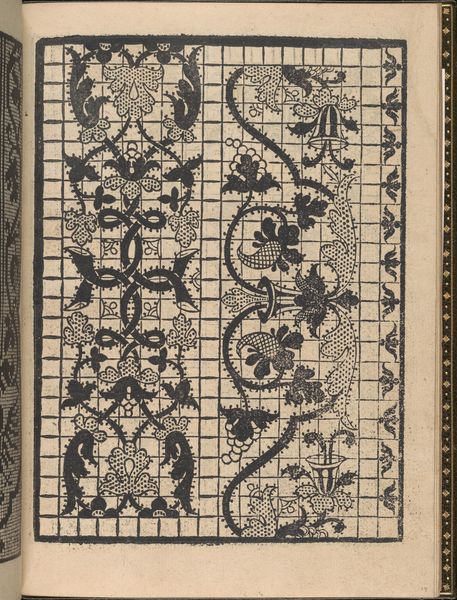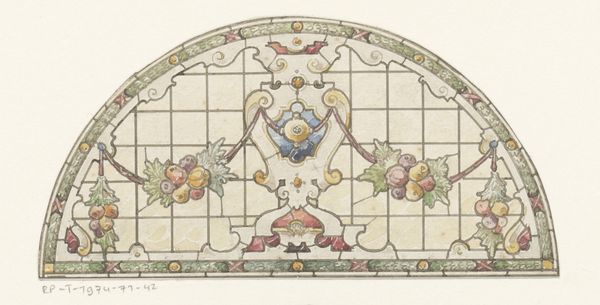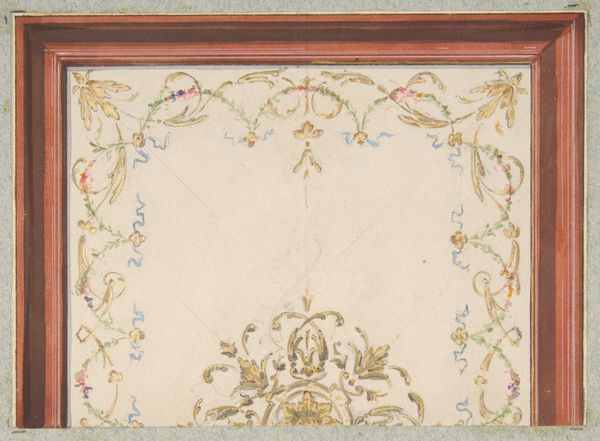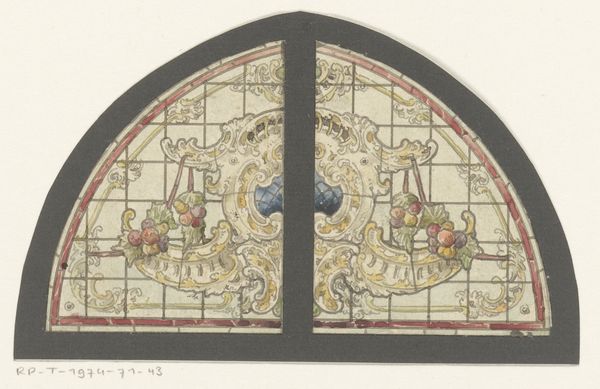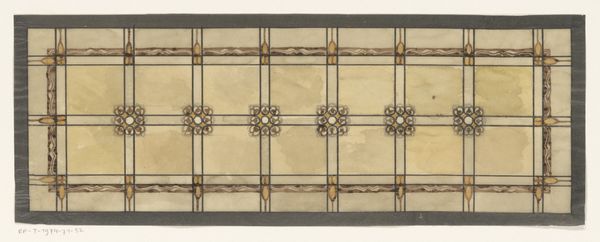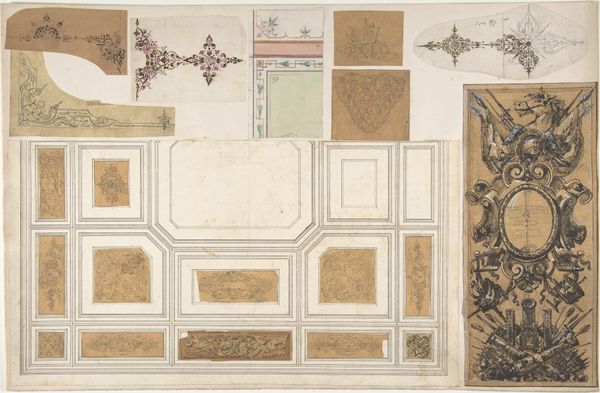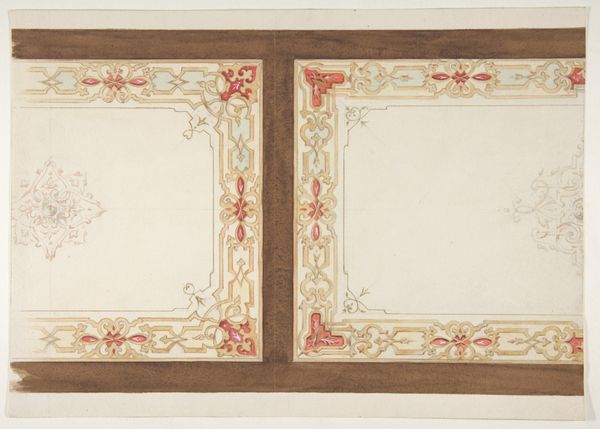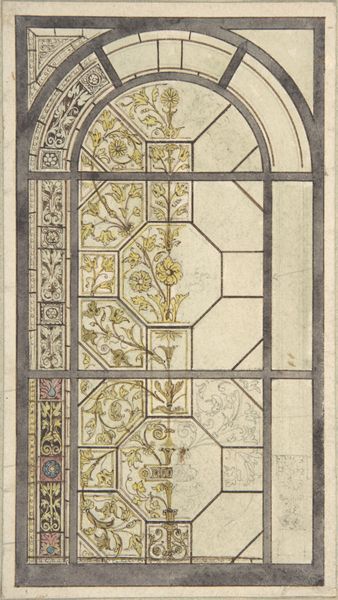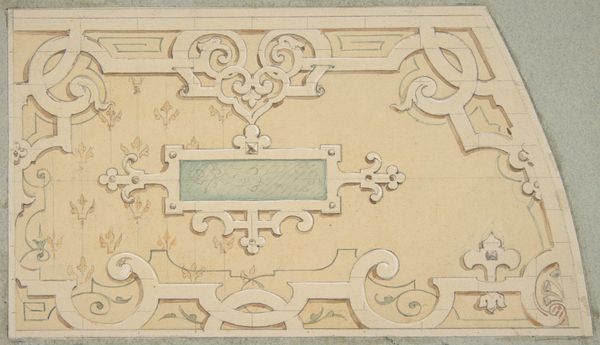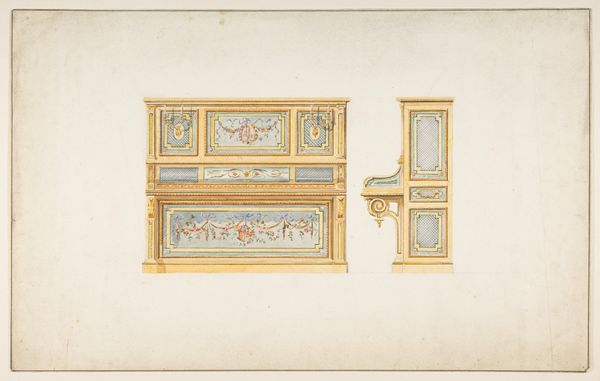
drawing, glass
#
drawing
#
art-nouveau
#
pattern
#
glass
#
decorative-art
Dimensions: height 128 mm, width 216 mm
Copyright: Rijks Museum: Open Domain
Curator: This is a drawing entitled, "Ontwerp voor een glas in loodraam met cartouche en guirlandes," an Art Nouveau design for stained glass from after 1907 by an anonymous artist. Editor: My first impression is one of contained elegance. The grid structure imposes a sense of order, yet the floral motifs and flowing ribbons introduce a touch of whimsy. It feels like a moment suspended between rigid control and joyful expression. Curator: The social context of Art Nouveau is quite fascinating. It emerged during a period of rapid industrialization, and its emphasis on organic forms and handcrafted aesthetics can be seen as a response to the mass-produced, often impersonal, objects that were becoming increasingly prevalent. This stained-glass design, in particular, represents a desire to bring beauty and nature back into the domestic sphere. Editor: I appreciate that perspective. Focusing on the institutional history, I'm intrigued by the intended public for this piece. Was it commissioned for a wealthy household, a public building, or perhaps a religious institution? That placement significantly shifts how we interpret its politics of imagery and symbolism, because the specific text in the cartouche appears like it's an advertising display text. Curator: Yes, precisely. Analyzing the piece from a gendered perspective, too, Art Nouveau often incorporated images of idealized women and natural motifs. If this work did get a residential placement, those elements often provided women an alternative sphere of empowerment outside the restrictive confines of the Victorian-era, but if commissioned by, for example, a religious institution, what did that change its interpretation to become? Editor: Looking at the artist’s methods of production, and in viewing Art Nouveau through the lens of craftsmanship, the glass would be very specific as the artist wants the light to function with it in a specific way. This stained-glass design also acts as a potential social commentary regarding the role of decoration and artistic expression, but as to which end, will ultimately fall to the commissioner, not just the design artist. Curator: It prompts reflection on the power dynamics inherent in artistic commissions, and in determining whose narrative takes precedence within the historical record, particularly for artworks by anonymous creators. Editor: Ultimately, in thinking about who would commission, or create this artwork today, the idea of how public and private spaces and institutions intersect for self expression offers an additional historical layer, don’t you think?
Comments
No comments
Be the first to comment and join the conversation on the ultimate creative platform.
